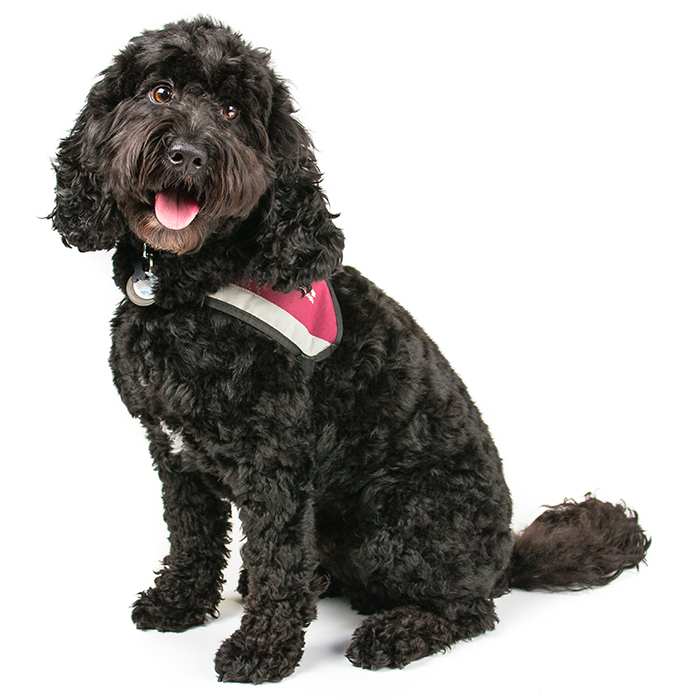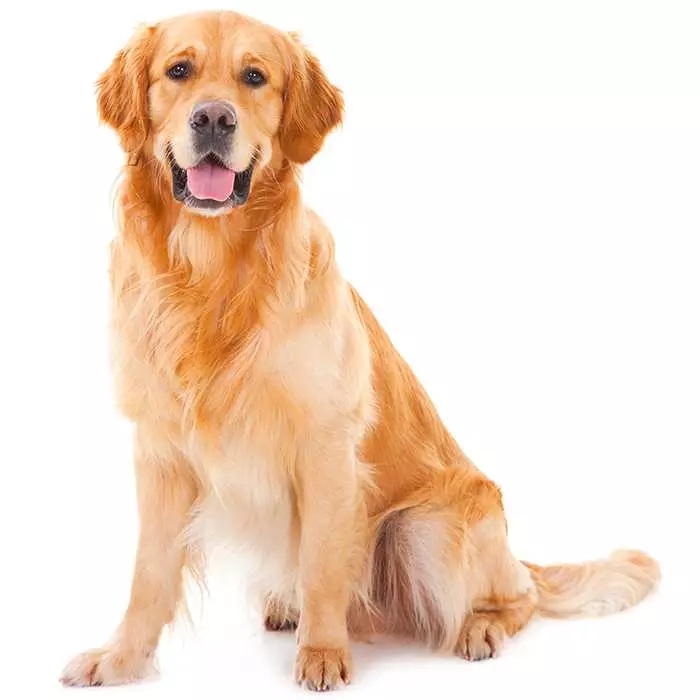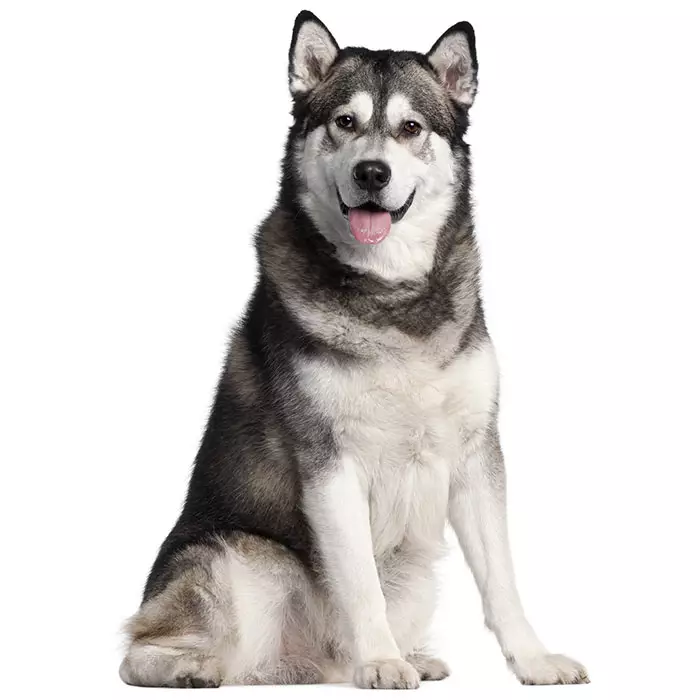Belgian Malinois
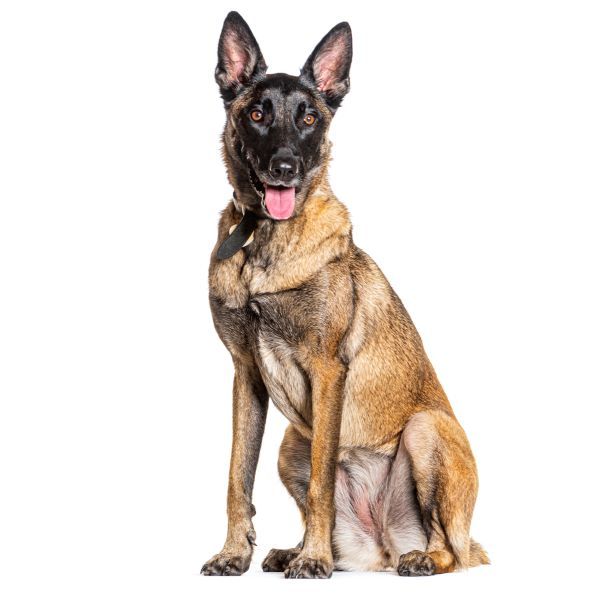

| Recommended for | Very active families, police, military |
| Breed Classification | Herding group |
| Other names | Mal, Belgian Shepherd dog |
| Lifespan | 14 - 16 years |
| Size | Medium |
| Temperament | Confident, outgoing, hard-working |
| Intelligence | Very high |
| Tendency to bark | Average |
| Maintenance Level | Medium |
| Health Risk | This breed has an around average probability of having health issues in its lifetime, hence it is one of the more affordable breeds to insure. |
Insuring a Belgian Malinois?
Get our award-winning Nose-to-Tail Cover with up to $30k annual benefit limit, up to 90% of eligible vet bills back, and no sub-limits.
Get a quick quote
Is this breed right for you?
Try our breed selector quiz to find out your best matching breed!
Insuring a Belgian Malinois?
Get our award-winning Nose-to-Tail Cover with up to $30k annual benefit limit, up to 90% of eligible vet bills back, and no sub-limits.
Get a quick quote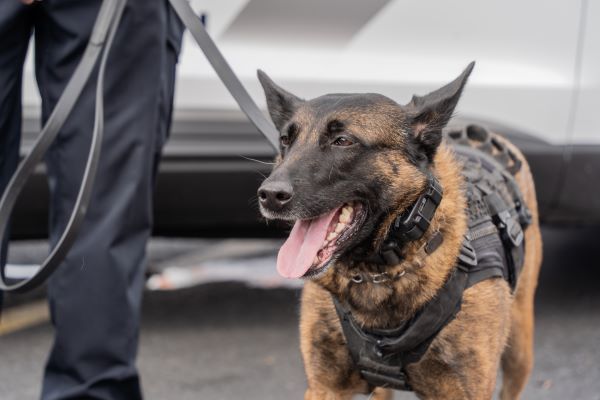
Breed history of Belgian Malinois
The Belgian Malinois (pronounced MAL-in-wah) was first bred in, and named after, the city of Malines in the northwestern region of Belgium. Developed by farmers, the Malinois descended from local shepherd dogs to be a versatile all-rounder who could heard small flocks, guard the farm and even pull carts.
The Malinois is one of four closely related varieties of Belgian herding dogs named for the region of Brussels where it was developed, differing mainly with respect to their coats. In Belgium, Canada, and all European countries, the Malinois is classified together with the Tervuren, Laekenois, and Belgian Shepherd (aka Groenendael) as a single breed collectively known as the Belgian Sheepdog. In America, the Malinois has been registered as a separate breed since 1959.
Malinois have long been regarded as an exceptional livestock herder in their native Belgium. They are still prized as herders of all kinds of stock, but their versatility and high work-drive have opened careers in many other occupations and activities. They are highly sought after as police and military K-9s world-wide. Malinois were first imported into Australia in 1987, and they are being utilised by our armed forces and police, as is the practice overseas.
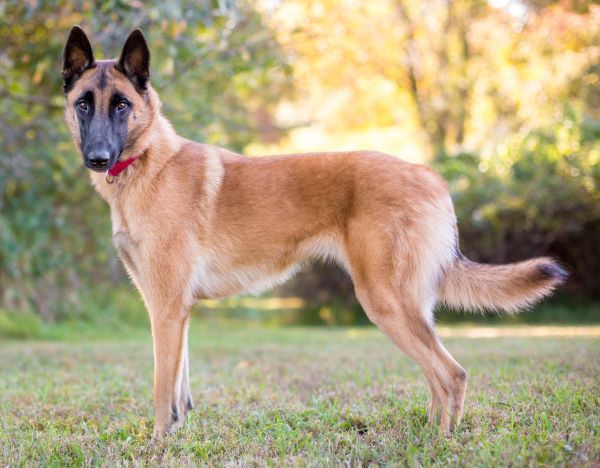
Physical description of Belgian Malinois
Belgian Malinois are one of the four varieties of closely related Belgian Shepherds. Anatomically identical, they vary in coat textures, colours and length.
The Malinois has a no-frills short, double-coat that ranges from fawn to mahogany in colour. Strong, agile and muscular without being bulky, the medium-sized Malinois is light on its feet, having a gymnastist’s body rather than a body-builder’s. The proud carriage of the head is a breed hallmark, while the black ears and mask frame its sparkling, questioning eyes that are the colour of dark Belgian chocolate.
The Malanois bears a passing resemblance to the German Shepherd but has a different head shape, and is leggier and finer boned, than its better-known, bigger and heavier German counterpart.
| Weight range | Males 25 to 30 kg; females 20 to 25 kg |
| Height range | Males 60 to 66 cm; females 56 to 61 cm |
| Colours | Fawn or mahogany |
| Coat length | Short |
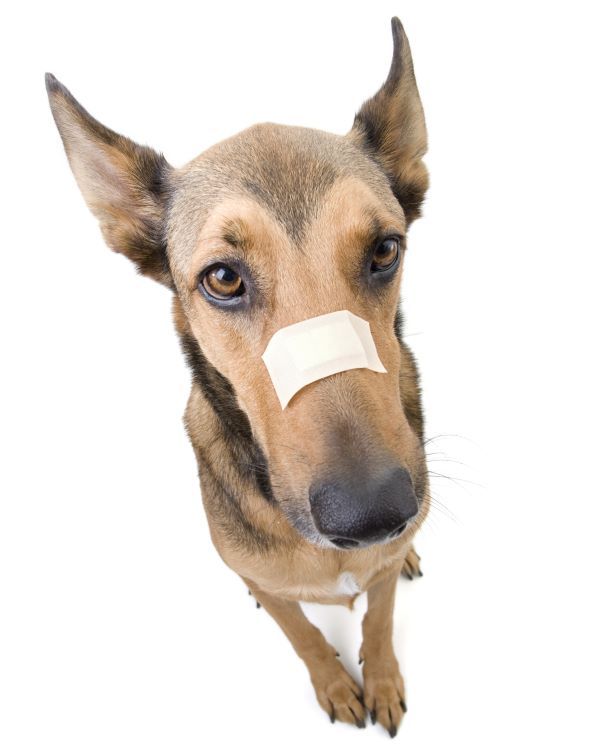
Belgian Malinois personality and temperament
Belgian Malinois are extremely loyal, sensitive and affectionate family companions who form a lifelong attachment to their owners, to the point of following them around the house. They do best when allowed to become a member of the family, and ultimately, they want nothing more than to spend as much time with their beloved owners as possible. Be aware that one of their inherent characteristics is being watchful over their family. While this can certainly have its benefits, it can also make it difficult to have guests or strangers come into the house.
Highly intelligent, confident, versatile and eager, the Malinois is a tireless worker – being probably one of the most hardworking breeds there is. With such a strong work ethic, the Malanois requires a confident, experienced owner who understands the dog’s intense personality and can meet their very high exercise needs.
They are not a good choice for the average household or family, nor for those who often work extended hours and have many other commitments. They are not the type of dog that can just be left in the backyard to entertain themselves; behavioural problems will occur if they are underemployed or neglected.
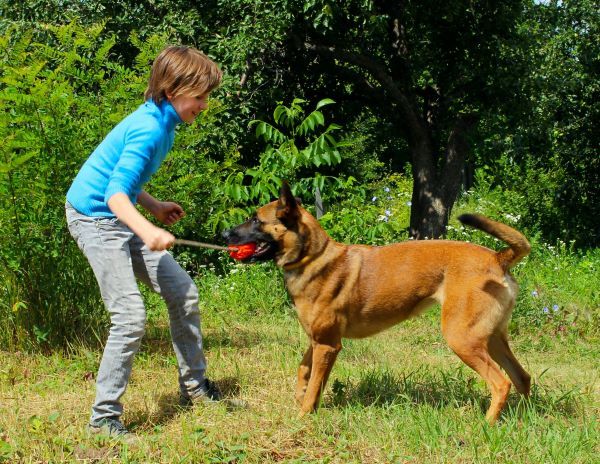
Belgian Malinois with kids and other pets
Belgian Malinois are good with children and other animals when properly introduced or raised with them. Generally, they are friendly towards children. However, some can also be protective, territorial, possessive, and jealous, and young children in particular should not be left alone unsupervised with them.
Malinois also have a high prey drive, making them extremely interested in moving objects. This can lead to them chasing after cars, other animals, and even children. They may also try to use their herding skills to round up toddlers and small children. They are usually good with dogs they have been socialised with from an early age, though they can be domineering.
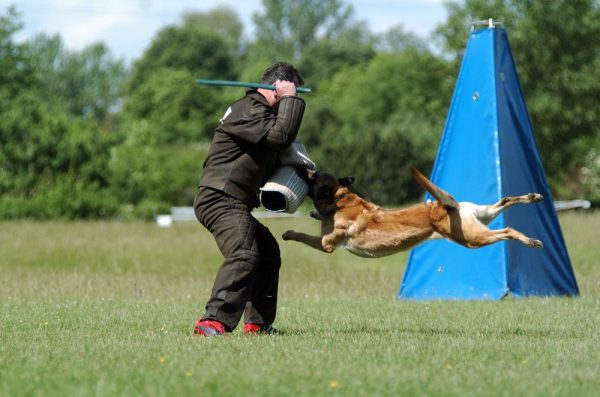
Belgian Malinois training and exercise
Athletic, and muscular, Malinois are a very high-energy breed that need a lot of exercise and stimulation. Highly intelligent and exceedingly devoted, the Malinois need to be actively engaged with its owner, both mentally and physically. Activity, and plenty of it, preferably side by side with their owners, is paramount to the breed’s happiness. Daily walks will not satisfy them but they make good companions for families that spend a lot of time jogging, hiking, running, biking, and exploring nature and the outdoors, and are willing to include their dog in all such activities.
They excel at agility, tracking, herding, obedience, search and rescue, and Schutzhund (protection) competitions and usually enjoy playing retrieving games. A fenced yard is necessary to provide a safe area for exercise and play, but this is not a dog who can be left in the backyard to “entertain” itself. When Belgian Malinois don’t get enough exercise or mental stimulation, they often start to exhibit destructive behaviours to keep themselves occupied.
Belgian Malinois are incredibly intelligent, fast and engaged learners who are easy to train, making training not only fun, but critical for their mental well-being. Like most herding breeds, they have a high prey drive and are strongly interested in moving objects, which can lead to chasing children, vehicles, or other animals and so should be directed into acceptable activities through training. Early socialisation and obedience training are essential, and it’s recommended that Belgian Malinois puppies are trained by a professional who is familiar with the breed.
| Energy level | Very high |
| Exercise requirements | Very high |
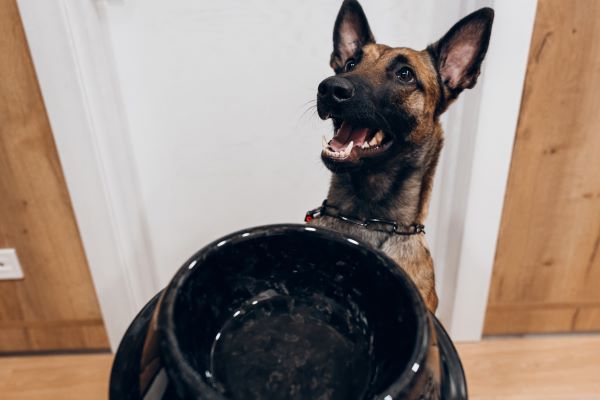
Belgian Malinois feeding and nutrition
Belgian Malinois don’t have specific dietary requirements and should do well on a high-quality dog food appropriate to the dog’s age (puppy, adult, or senior) and activity level. In general, Belgian Malinois should be fed twice daily, in the morning and evening.
Some dogs are prone to getting overweight, so monitor your dog’s calorie consumption and weight level. Treats can be an important aid in training, but should be used in moderation if weight gain is a concern. Check with your vet if you have any concerns about your dog’s weight or diet.
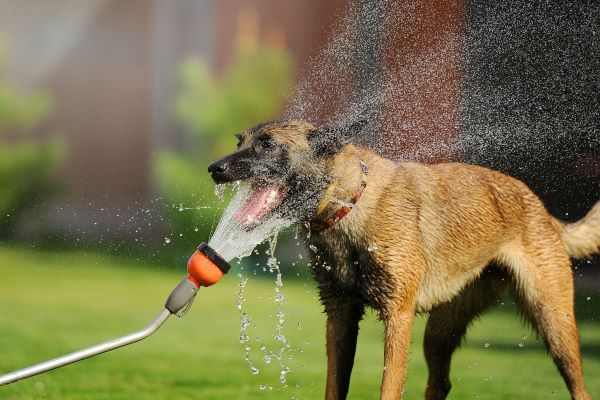
Belgian Malinois care and grooming
The short, waterproof coat of the Malinois is quite easy to look after. Occasional brushing will keep them looking their best, and will promote new hair growth and distributes skin oils throughout the coat.
Malinois shed seasonally twice a year; this “blowout” of their undercoat typically lasts two to three weeks and helps better prepare their body for the coming season (winter or summer). During these periods, a daily once-over with a slicker brush will help to remove the loose hair.
Baths should be performed as needed but typically not more than once per month to avoid drying out their skin.
Health issues for Belgian Malinois
- Hip dysplasia and Elbow dysplasia are inherited conditions which occur when the ball and socket of the affected joint do not fit together properly. As these conditions can cause painful arthritis in the joint later in the dog’s life, it is essential to begin management and/or treatment of the condition as soon as possible. For elbow dysplasia, surgery may be recommended.
- Epilepsy is a general term for neurological disorders that bring on sudden and repeated seizures. Most seizures last between 5 and 60 seconds but some may be as long as several minutes. They can occur with or without a loss of consciousness.
- Cataracts are an opacity or cloudiness in the lenses of the eye, which can be complete or partial. Dogs with more than 60 percent opacity in their lens can have partial blindness or complete loss of vision. Cataracts usually occur in both eyes, with the condition being more common in dogs than in any other species. Cataracts are progressive and if not treated, can result in blindness. The most suitable mode of treatment is early surgery.
- Progressive Retinal Atrophy (PRA) describes a group of eye conditions in which an atrophy or degeneration of retinal tissue occurs. The first sign of progressive retinal atrophy is usually night blindness; this progresses to total blindness over a period ranging from months to years.
Not all conditions are covered by Pet Insurance. For details of Bow Wow Meow Pet Insurance cover, refer to the Product Disclosure Statement.
Free engraved pet ID tag on sign up3
Customer Satisfaction
21 day cooling off
Easy to use Pet Portal

GapOnly® in vet claims
MORE INFORMATION
Working Malinos Australia: https://workingmalinoisaustralia.com/
Belgian Shepherd Dog Club QLD: https://www.bsdcq.com/
The Belgian Shepherd Dog Club of Victoria (Inc): https://bsdcv.com.au/
American Belgian Malinois Club: https://www.malinoisclub.com/abmc/


